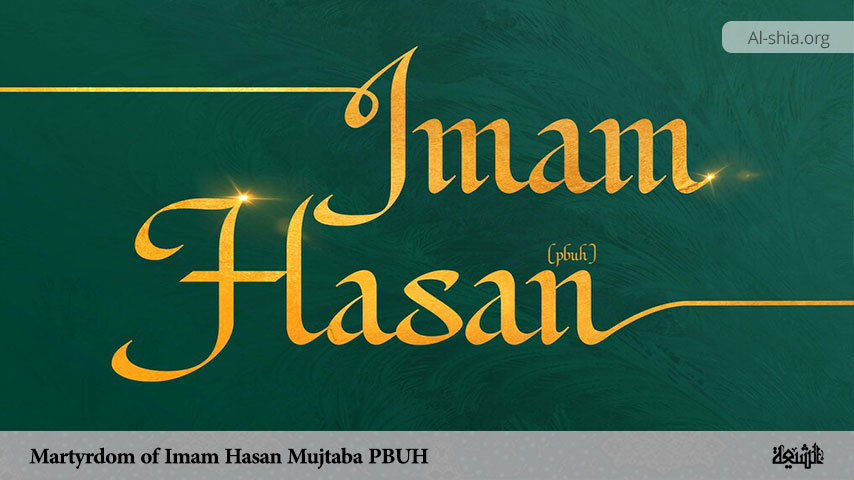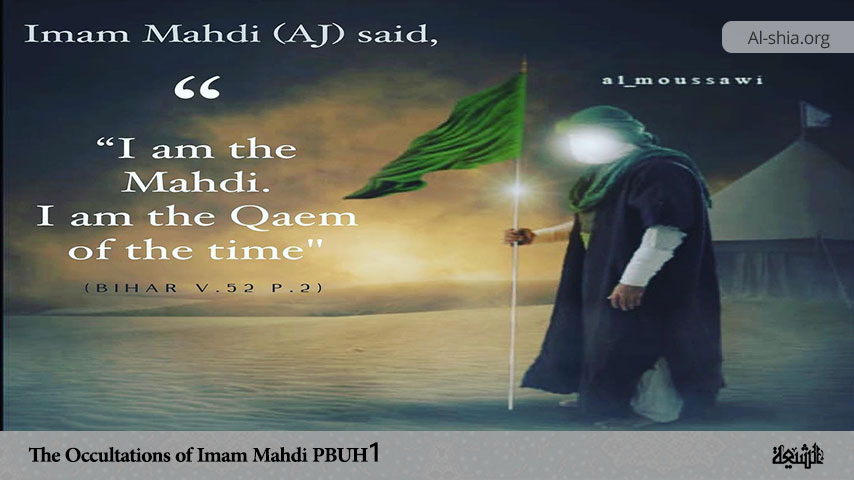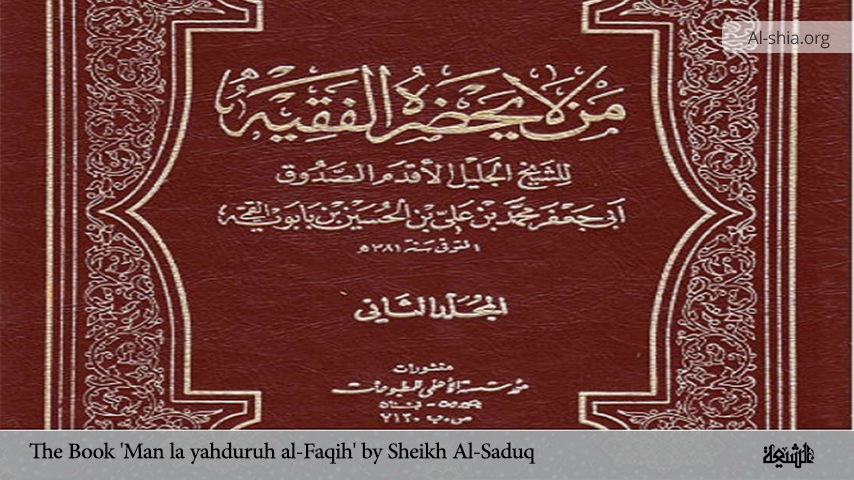After the martyrdom of the Commander of Faithful, Ali ibn Abi Talib (PBUH), one of the most pivotal figures during this time was Imam Hasan ibn Ali al-Mujtaba, the elder grandson of Prophet Muhammad and the son of Ali ibn Abi Talib and Fatimah Zahra. As the second Imam in Shia Islam, his life and martyrdom of Imam Hasan ibn Ali al-Mujtaba are integral to understanding the early struggles and developments in Islamic history. His legacy, marked by his unwavering faith, moral integrity, and dedication to peace, continues to be a source of inspiration and guidance for Muslims. This study aims to explore the historical and political circumstances leading up to the martyrdom of Imam Hasan ibn Ali al-Mujtaba, examine the immediate and long-term impacts of his martyrdom on Islamic history and understand the religious, cultural, and political legacy of Imam Hasan and how it continues to influence the Muslim world today.
Political Environment Leading to His Martyrdom
Imam Hasan ibn Ali’s caliphate was marked by significant challenges both from within his own ranks and from external adversaries. After the assassination of his father, Ali ibn Abi Talib (peace be upon him), Imam Hasan was nominated as the second Imam[1] and the majority of Muslims pledged their allegiance to him and finalized the formality of bay’ah (oath of allegiance) as the fifth caliph of the Muslims[2].
However, his authority was contested by Muawiyah ibn Abi Sufyan, who controlled Syria and sought to consolidate his power over the entire Muslim community. In addition, Imam Hasan had challenges internally with some of his followers, as there were factions within his camp that were more inclined toward immediate confrontation with Muawiyah[3]. This internal division weakened his position and made it difficult to mount a unified defence against Muawiyah’s advances.
On the contrary, Muawiyah was a shrewd politician who had opposed Ali’s caliphate and now sought to eliminate Hasan as a rival. Muawiyah’s forces were well-organized and had the strategic advantage of controlling the economically prosperous region of Syria. Realizing the precariousness of his situation and the potential for further bloodshed, Imam Hasan sought a peaceful resolution[4].
The treaty Imam Hasan signed with Muawiyah stipulated that Muawiyah would assume the caliphate but would not appoint a successor, allowing the Muslim community to choose their next leader. In return, Muawiyah agreed to respect the rights and privileges of Imam Hasan and his family and to refrain from persecution of Imam Hasan’s supporters.
Following the treaty, Imam Hasan withdrew from political life and settled in Medina. Despite his retreat from active politics, he remained a significant figure due to his lineage and the respect he commanded among many Muslims. However, his life in Medina was not without challenges. There were attempts on his life, and he was under constant surveillance by agents loyal to Muawiyah, who feared Hasan might regain political influence.
His Martyrdom
Many dates have been reported by historians as the year of martyrdom of Imam Hasan. Some sources have mentioned the years 49 AH/669 CE, 50 AH/670 CE, or 51 AH/671 CE as the year of the Imam’s martyrdom[5]. Among these years, 50 seems to be more probable (670 CE)[6]. As to the month of his martyrdom, the Shiite sources have mentioned the month of Safar[7], but in most of the Sunni sources Rabi’ I is mentioned[8].
Many Shiite scholars such as al-Shaykh al-Tusi[9], al-Tabrisi[10], and Ibn Shahrashub[11] have mentioned Safar 28th (March 27, 670 CE). Al-Kulayni has mentioned the last day of Safar[12], and al-Shahid al-Awwal has mentioned Safar 7th (March 6, 670 CE)[13]. Investigating the authenticity of these different reports, Muqaddasi has concluded that Safar 28th is the right date[14]. It is pertinent to mention that the martyrdom of Imam Hasan ibn Ali al-Mujtaba was widely believed to have been caused by poisoning with the directive of Muawiyah ibn Abi Sufyan.
Aftermath and Impacts of His Martyrdom
The immediate aftermath of Imam Hasan’s martyrdom was one of profound sorrow and heightened tension within the Muslim community. Imam Hasan’s funeral in Medina was marked by deep mourning among his family and supporters. His burial itself became a point of contention; while some wished for him to be buried alongside his grandfather, Prophet Muhammad (PBUHH), opposition from the ruling authorities and certain factions led to his interment in the Jannat al-Baqi cemetery[15].
In Shia Islam, the martyrdom of Imam Hasan ibn Ali al-Mujtaba is seen as a profound act of sacrifice and a testament to his commitment to peace and justice. His martyrdom is viewed as part of the divine plan and a continuation of the suffering endured by the Prophet Muhammad’s family (Ahl al-Bayt). Shia theology holds that the Imams are divinely appointed leaders whose lives and deaths are imbued with spiritual significance. Imam Hasan’s martyrdom underscores the theme of righteous suffering and steadfastness in the face of oppression.
The martyrdom had a lasting impact on Islamic history, particularly in the context of Shia-Sunni relations. It set a precedent for the themes of martyrdom and sacrifice that would later be epitomized by Imam Husain at the Battle of Karbala. The events surrounding Hasan’s life and martyrdom contributed to the shaping of Shia identity and the development of Shia religious and political thought. His martyrdom also highlighted the deep-seated conflicts within the early Muslim community, influencing the discourse on leadership and governance in Islam.
Legacy of Imam Hasan
Imam Hasan ibn Ali al-Mujtaba’s legacy is marked by his contributions to Islamic thought, particularly through his emphasis on peace, justice, and piety. His decision to enter into a peace treaty with Muawiyah, though controversial, is seen as a pragmatic move to prevent further bloodshed and division within the Muslim community. This act demonstrated his commitment to the well-being of the Muslim ummah over personal or political gain.
Imam Hasan’s approach to leadership, characterized by humility and moral integrity, set a standard for subsequent Islamic rulers and leaders. His life and actions are often cited in discussions about the ethical and moral responsibilities of Muslim leaders, highlighting the importance of prioritizing community welfare and unity. He is revered as a peacemaker who sacrificed his political ambitions for the greater good of the Muslim community.
His martyrdom is a powerful symbol of the struggle against oppression and injustice, themes that resonate deeply within both Shia and Sunni traditions. Imam Hasan’s willingness to endure personal suffering and ultimately his martyrdom is viewed as a testament to his unwavering faith and dedication to Islamic principles.
Imam Hasan’s life and martyrdom have been extensively depicted in Islamic literature, poetry, and art. His story is a central theme in Shia devotional literature, where he is portrayed as a paragon of virtue and a victim of political treachery. These literary works serve not only as historical accounts but also as means of inspiring and educating future generations about his legacy.
Imam Hasan’s legacy has a lasting influence on Islamic cultural heritage, particularly in Shia-majority regions. His life and teachings are celebrated through festivals, religious gatherings, and educational programs. The commemoration of his martyrdom is an integral part of cultural and religious identity, reinforcing values of sacrifice, resilience, and justice.
Conclusion
Imam Hasan ibn Ali al-Mujtaba’s life and martyrdom hold profound significance in Islamic history, exemplifying his dedication to peace, justice, and ethical leadership amidst intense political challenges and shaping both religious thought and political dynamics within the Muslim community. The decision of Imam Hasan to enter a peace treaty with Muawiyah highlighted his commitment to unity over personal power, while his martyrdom remains a symbol of resistance against oppression. His enduring influence underscores the importance of principled leadership and the quest for peace in the Muslim world.
As a matter of fact, his martyrdom not only marked the end of a significant leadership period but also intensified the political and sectarian divisions within the Muslim community. Understanding the circumstances and implications of his martyrdom provides insights into the early struggles and conflicts that shaped the Islamic world. Moreover, it sheds light on the themes of sacrifice, leadership, and the quest for justice, which resonate deeply in both historical and contemporary contexts.
References
[1] . Shaykh Mufid, Kitab Al-Irshad, p. 255.
[2] . WOFIS, A brief history of the fourteen Infallibles, p. 83.
[3] . Shaykh Mufid, Kitab Al-Irshad, p. 257.
[4] . Ibid, p. 260.
[5] . Balādhurī, Aḥmad ibn Yaḥyā, Ansāb al-Ashrāf, vol. 3, p. 64; Kulaynī, Muḥammad ibn Yaʿqūb, Al-Furūʿ min al-Kāfī, vol. 1, p. 461; Ibn ʿAbd al-Barr, Yūsuf ibn ʿAbd Allāh, Al-Istīʿāb fī Maʿrifat al-Aṣḥāb, vol. 1, p. 389.
[6] . Muqaddasī, Muṭahhar ibn Ṭāhir, Bāzpazhūhī-yi tārīkh-i wilādat wa shahādat-i maʿṣūmān, p. 255-259.
[7] . Kulaynī, Muḥammad ibn Yaʿqūb, Al-Furūʿ min al-Kāfī, vol. 1, p. 461; Ṭabrisī, Faḍl ibn al-Ḥasan, Iʿlām al-warā bi-aʿlām al-hudā, vol. 1, p. 403; Irbilī, ʿAlī ibn ʿĪsā, Kashf al-ghumma fī maʿrifat al-aʾimma, vol. 1, p. 486.
[8] . Balādhurī, Aḥmad ibn Yaḥyā, Ansāb al-Ashrāf, vol. 3, p. 66; Ibn ʿAbd al-Barr, Yūsuf ibn ʿAbd Allāh, Al-Istīʿāb fī Maʿrifat al-Aṣḥāb, vol. 1, p. 389.
[9] . Ṭūsī, Miṣbāḥ al-mutahajjid, vol. 2, p. 790.
[10] . Ṭabrisī, Faḍl ibn al-Ḥasan, Iʿlām al-warā bi-aʿlām al-hudā, vol. 1, p. 403.
[11] . Ibn Shahrāshūb, Muḥammad ibn ʿAlī, Manāqib Āl Abī Ṭālib, vol. 4, p. 29.
[12] . Kulaynī, Muḥammad ibn Yaʿqūb, Al-Furūʿ min al-Kāfī, vol. 1, p. 461.
[13] . Shahīd al-Awwal, Muḥammad ibn Makkī, Al-Durūs al-sharʿīyya fī fiqh al-imāmīyya., vol. 2, p. 7.
[14] . Muqaddasī, Muṭahhar ibn Ṭāhir, Barrasī wa naqd-i guzārishā-yi tārīkh-i shahādat-i Imam Ḥasan Mujtabā, p. 109-110.
[15] . Balādhurī, Aḥmad ibn Yaḥyā, Ansāb al-Ashrāf, vol. 3, p. 62.

















